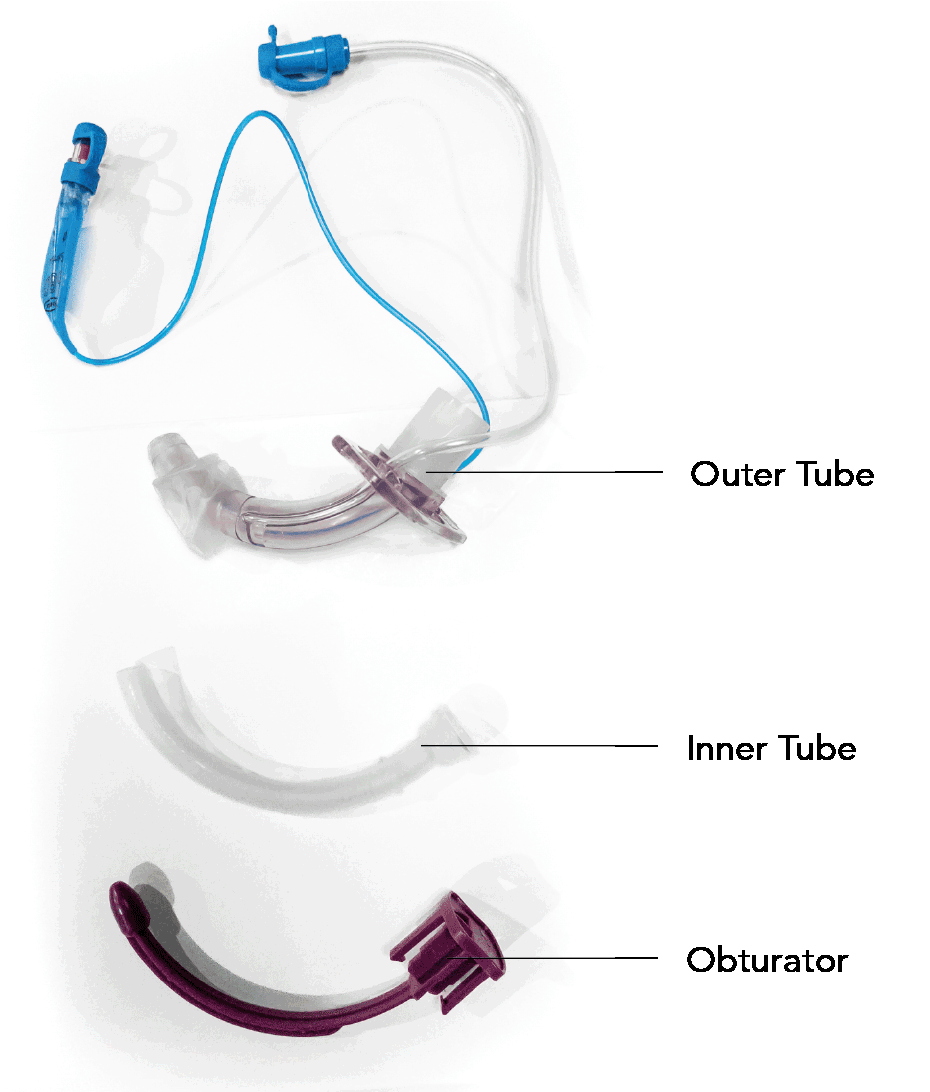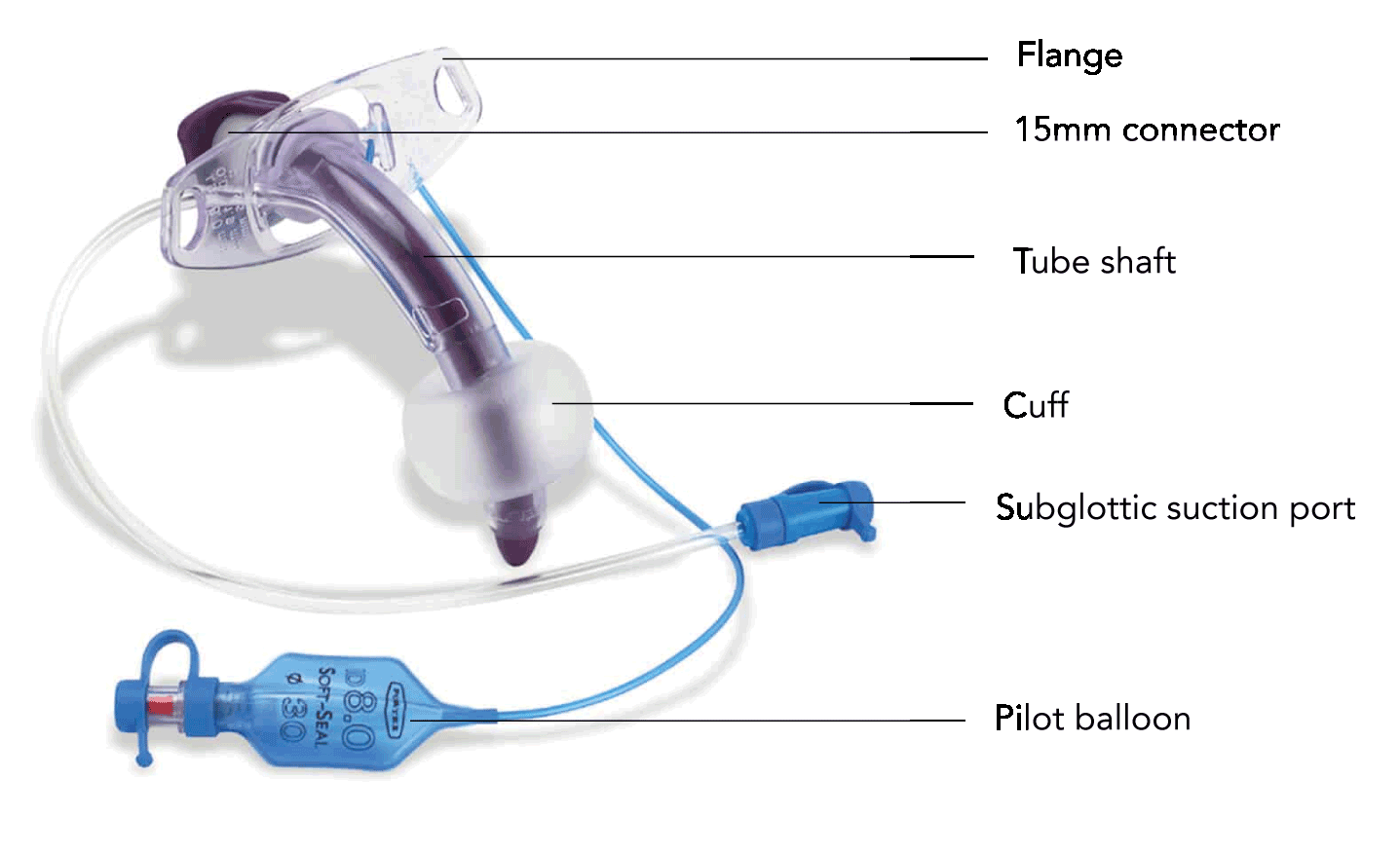What are the components of a typical tracheostomy tube?
- Typically made up of three parts:
Outer Tube
Inner Tube
Obturator
What are the features of a standard tracheostomy outer tube?
Tube Shaft
15mm Connector
Cuff, Pilot Balloon & Port
Neck Flange
Subglottic Port


